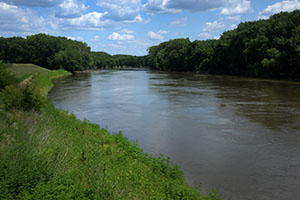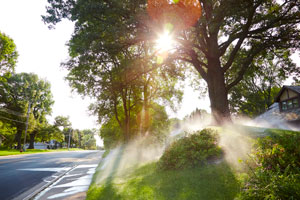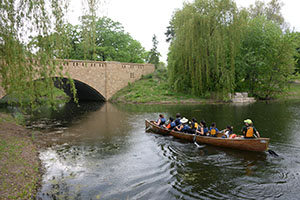Combating Climate Change

Our role in protecting public health and the environment goes beyond cleaning wastewater and water resource planning – we work to minimize our environmental impact by managing our operations in a sustainable way. We invest in renewable energy resources, conserve and reuse water, and adapt our work continuously as we plan for climate change impacts. Sustainability is one of our priorities as we continue to work toward clean water for future generations.
 Turfgrass irrigation efficiency project helps communities meet drought challenges
Turfgrass irrigation efficiency project helps communities meet drought challenges
In a recent survey about irrigation practices in the Twin Cities metro area, 40% of respondents reported that they irrigate their lawn every other day during the warmer months, regardless of weather. In the metro area, about 30% of groundwater supplied by communities is used outdoors. During a drought this use can be even higher.
To help increase the efficiency of water use for home lawns and landscapes and lessen the stress on area water resources and supply systems, we are funding a multi-year project in cooperation with the University of Minnesota Turfgrass Science Program. The project includes site assessments, research, and demonstration projects focused on smart irrigation practices.
As part of our Turfgrass Irrigation Efficiency project, we have installed different types of irrigation controllers at a site at the Minnesota Landscape Arboretum. A new Lawn Water Conservation Educator was hired in 2022, and plans were made to update all below-ground parts and nozzles of the irrigation system demonstration plot.
Saving water with water efficiency grants
Our Water Efficiency Grant Program funded the replacement of thousands of home devices with WaterSense-labeled alternatives in 2022 through competitive grants to metro communities that manage municipal water systems. This included 1,140 toilets, 839 irrigation controllers, and 196 spray sprinkler bodies. It also funded 80 irrigation audits. The estimated annual water savings from these activities is nearly 36 million gallons per year.
In 2022, the Minnesota Legislature awarded the Met Council $1,250,000 in Minnesota Clean Water, Land & Legacy Amendment funding to implement a new iteration of the Water Efficiency Grant Program. In the 2022-2024 program, we were able to increase our coverage of the program’s cost to 80%. The 37 participating municipalities, 31 of which are returning participants, provide a 20% match. See participating cities and read the grant program criteria on our website.
 Shaping the next Priority Waters List
Shaping the next Priority Waters List
Environmental Services expanded our Priority Lakes List into the Priority Waters List in 2022, adding rivers and streams and considering a broader array of uses and benefits when selecting waters for the list. The list helps us prioritize our investments for monitoring, protecting, and restoring waterbodies that offer the greatest benefit to the region. It also helps us manage waters more effectively, efficiently, and equitably.
ES scored waterbodies using seven categories of benefits that can be quantified: Drinking Water Protection, Recreation and Tourism, Healthy Habitat, Tranquil Connection, Equity, Industry and Utility, and Science and Education. Our regional partners are encouraged to use the Priority Waters List, too.
“Climate change threatens the very things that make Minnesota a great place to live – from our wonderful lakes to farmable land and clean air.”
— Governor Tim Walz
Working toward the Climate Action Work Plan
In 2022, the Met Council drafted and sought input on its Climate Action Work Plan. A key goal of the plan is to unify efforts across the agency over the next five years to reduce our climate impacts and prepare for a changing climate. The plan defines strategies and actions that will strengthen our ability to plan and deliver services to the region.